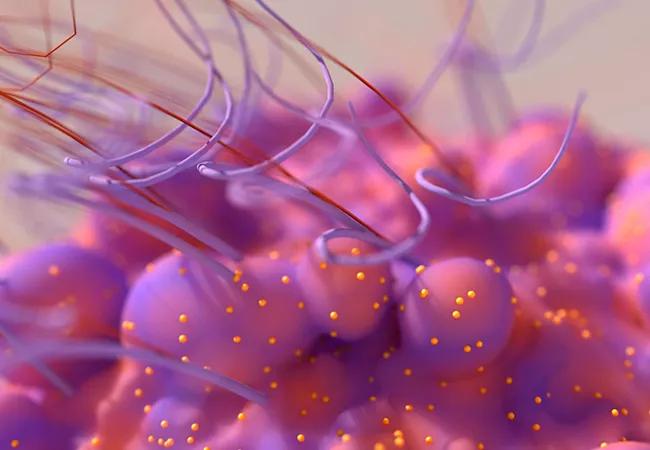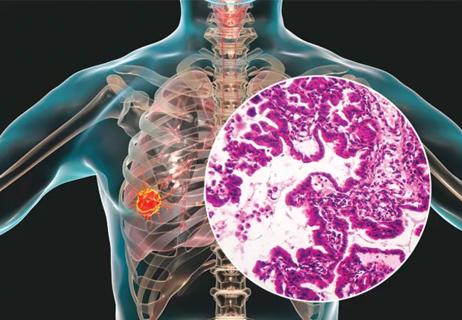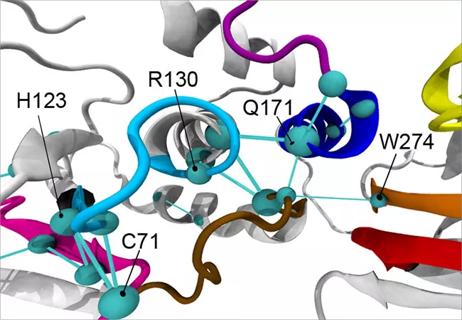Understanding cell growth dynamics may be key to controlling therapeutic resistance

The development of treatment resistance in cancer is driven by the same evolutionary mechanisms that drive change and escape from therapy in most human diseases. It is believed to be a consequence of complex factors that include genomic alterations and generation of phenotypically distinct cellular subclones resulting in tumor heterogeneity. A thorough understanding of these mechanisms is lacking, which is why overcoming treatment resistance in cancer is such a monumental challenge.
Advertisement
Cleveland Clinic is a non-profit academic medical center. Advertising on our site helps support our mission. We do not endorse non-Cleveland Clinic products or services. Policy
“In the study of drug resistance, researchers often try to ascertain the fitness of cells harboring specific mutations in the presence of a drug in vitro,” explains Jacob Scott, MD, DPhil, radiation oncologist and head of Cleveland Clinic’s Theory Division. “But the reality is more complex because tumor cells don’t exist in a vacuum; instead, they coexist in a complex, heterogeneous mixture of other tumor cells — an interactive ecology.”
With approximately 90% of cancer deaths attributed to treatment-resistant disease, these cellular interactions, also known as evolutionary games, have high stakes.
In their latest study, published July 1, 2022 in Science Advances, Dr. Scott and his collaborators used an assay they previously developed to directly measure those interactions in a simplified tumor ecology consisting of drug-resistant NSCLC cells and their drug-sensitive precursor (ancestor) cells.
Gefitinib-resistant cells were derived from an existing lung cancer cell line PC9 by continual treatment with gefitinib over 6 months and grown in an in vitro co-culture experiment with their sensitive ancestors. Cellular growth dynamics were assessed in the presence and absence of gefitinib, a tyrosine kinase inhibitor currently approved as first-line treatment of EGFR+ metastatic non-small-cell lung cancer (NSCLC).
“We cultured the two populations together in different starting fractions and measured how their growth changed depending on how much of each population was mixed together,” explains Jeff Maltas, PhD, a postdoctoral researcher and co-lead author on the study. “The main goal was to highlight that frequency-dependent growth measurements are necessary to determine if a population is competitively excluded or not.” In co-culture experiments, competitive exclusion refers to one cell line outgrowing and forcing the other into extinction, he adds.
Advertisement
What the authors found was that the fitness of the resistant type changes drastically depending on the composition of the mixture. The fitness is much higher when the resistance is rare, something that could not have been detected in standard assays. This suggests a novel mechanism for resistant cells to persist in the absence of treatment, even with a cost.
“This paper highlights the need to understand and directly measure the ecological interactions that change fitness [and that] come from being around other cell types,” Dr. Scott says. “That’s something we’re doing here that’s fundamentally different.”
“We’re highlighting that the growth rates can change dramatically if you culture the strains together, and so you have to measure them to explain anything about their behavior,” Dr. Maltas adds.
Experiments revealed that the resistant population was outcompeted by the ancestral line at all studied population frequencies in the absence of therapy, pointing to complete competitive exclusion of the resistant population and a classic “cost of resistance”.
“We measured how the growth rate of both the resistant and ancestor populations varied as a function of their frequency in the co-cultured population,” Dr. Maltas says. “In largely resistant co-cultures, the resistant population grows about 33% slower than the ancestor. However, in largely ancestor co-cultures, the resistant population grows at nearly the same rate as the ancestor.”
As expected, the addition of the targeted therapy gefitinib resulted in a complete reversal of this effect, and the resistant clone was able to outcompete the sensitive ancestor.
Advertisement
“Once gefitinib treatment is applied, the dynamic is reversed,” he says. “It’s no longer a competition for fastest growth, something the ancestor is adept at; instead, it’s a competition of gefitinib resilience and survival, exactly what the resistance population was evolved to do. As a result, the resistance population competitively excludes the sensitive population.”
“So – big picture — in the absence of therapy, the sensitive strain will competitively exclude the resistant strain. As you add the drug that the resistant strain has evolved to, the dynamic flips, and the resistant strain competitively excludes the ancestor sensitive strain,” he adds.
Dr. Scott notes that although these latest findings cannot be directly extrapolated to what happens in clinical scenarios, they do raise important questions with potentially significant implications on clinical research and trial design.
For example, if the evolutionary mechanisms and cellular growth dynamics underlying treatment resistance can be thoroughly understood in vitro, could they then be controlled with interventions aimed to intercept them? Are the evolutionary mechanisms observed here generalizable to other targeted therapies in lung cancer? Or to any cancer?
In broader terms, could patients benefit from having drug holidays to allow the maintenance of a critical treatment-sensitive population of tumor cells? And, could dynamic treatment regimens consisting of on-treatment and off-treatment periods allow for better control of cancer cell growth and, in the long term, prolong the lives of patients?
Advertisement
“I do think that one of the most exciting parts of this paper are the opportunities for clinical advances that it highlights,” Dr. Scott says. “In particular, we now see direct evidence for something that evolutionary and adaptive therapy communities have been using as a null-hypothesis or as an assumption that this phenomenon exists. These data are a call to the community to start making measurements like these more commonly and to try to move toward the in vivo context.”
As precursors to clinical studies, co-culture experiments represent an effective way to study the evolution of resistance in a complex and interactive cellular system. Drs. Scott and Maltas are optimistic that future studies will provide additional insights into the growth dynamics between treatment-sensitive and treatment-resistant populations, not only in NSCLC, but in other cancer types as well.
Advertisement
Advertisement

Universal testing could reduce expected costs compared to EGFR single gene testing

Research enables precision medicine beyond patients with changed mutational status

Specialized clinic addresses long-term wellness through the study of somatic mutations

Other reproductive and hormonal factors found protective

Improved risk stratification for all women

Adrenal-permissive HSD3B1 plays a role

Clinicians and researchers with unique expertise

Actionability of tumor DNA data remains limited